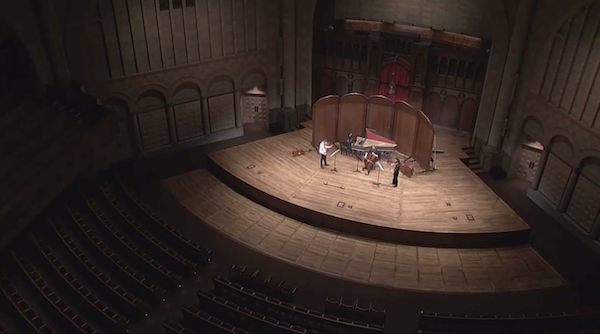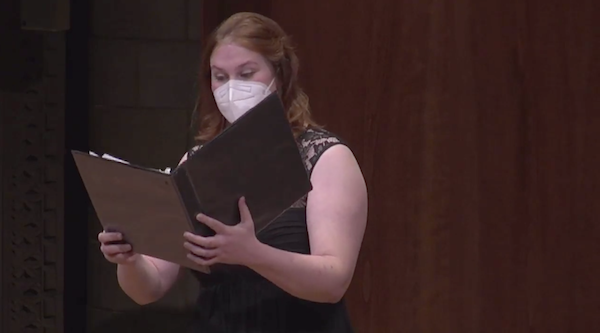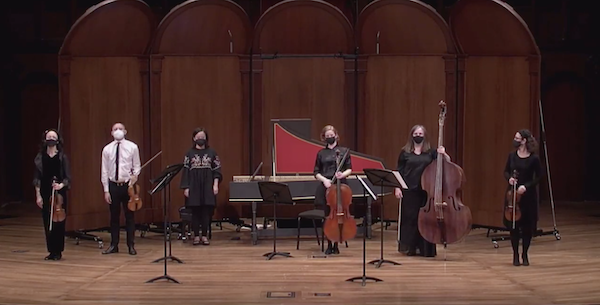by Jarrett Hoffman

Here are the numbers: seven masked performers (including several period-instrumentalists and, notably for these times, a soprano) alternated through multiple configurations from duo to sextet as they explored music by eight composers of the 17th and 18th centuries.
The focus was on women, who comprised five of those eight slots on the program: Isabella Leonarda, Élisabeth Jacquet de la Guerre, Barbara Strozzi, Leonora Duarte, and Wilhelmine von Bayreuth, joined by Antonio Vivaldi, J.S. Bach, and G.H. Stölzel. Adding to the symbolism of the concert, six of the seven performers were women. The biggest highlights of the evening came from the pens of Strozzi and Wilhelmine.

The evening’s finale, Wilhelmine’s Harpsichord Concerto in g, offers plenty of variety both within and across its three movements, and sparkles with a sense of life. That was especially true in this performance: each phrase breathed in the hands of Tan, Benn, violinists Miho Hashizume and Guillermo Salas-Suárez, violist Yaël Senamaud-Cohen, and bassist Tracy Rowell.
Qin Ying Tan was the excellent soloist, a compelling performer who is equally comfortable handling long strings of notes (as in the “Gavotte”) and singing through emotive melodies with her instrument (in the “Cantabile” — which is full of intriguing harmonies on the fence between major and minor).
Her playing was not the only way she proved to be a strong advocate for this music: stepping to the microphone to introduce the Concerto, she was a natural and knowledgeable speaker who helped to bring perspective to the program. Belief in diversifying the canon is rarely expressed so genuinely and powerfully as on Sunday evening from Tan.
This most significant of the program’s spoken segments also served a more simple purpose: transition. One price of having so much variation in personnel across so many short pieces is the time spent hearing musicians tune, and seeing bodies and music stands move on and off stage. As a result, the program often felt disjointed. We’re all grateful for live music right now, but perhaps this recital would have been better-suited to pre-production, with smooth cuts from one piece to the next.
A few performances could have used more polish. In Jacquet de la Guerre’s Chamber Sonata No. 1 in B-flat, some technical passages felt uneasy, and the ensemble didn’t quite settle into a collective groove. Uneven balance between voice and instrumentalists held back Stölzel’s Bist du bei mir and Bach’s “Auch mit gedämpften, schwachen Stimmen” from Cantata No. 36.
In the end, it’s important not to let those details get in the way of the big picture, which is that CityMusic deserves enormous credit for its dedication this season to recognizing a pivotal moment in history, and for helping to correct history’s narrative.
Published on ClevelandClassical.com December 14, 2020.
Click here for a printable copy of this article




